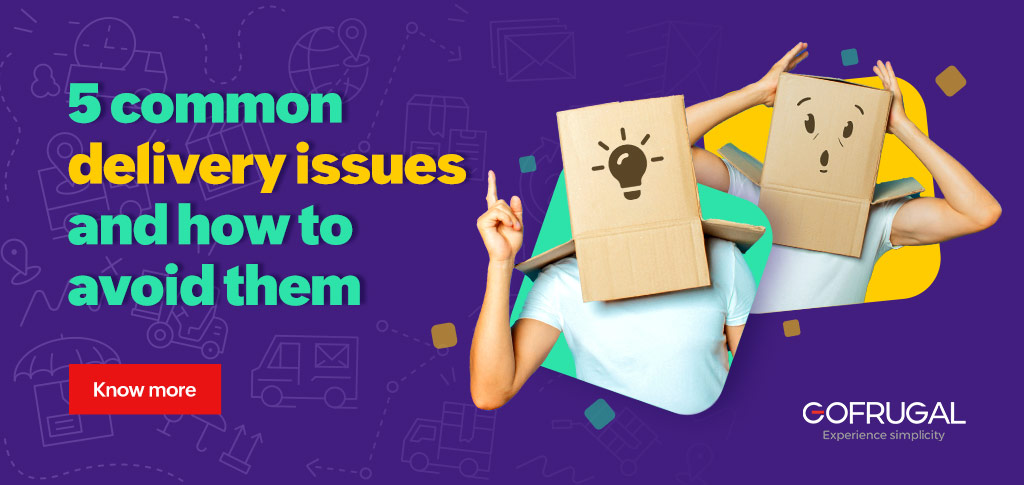Potatoes, pizza, or paracetamol, you have to get that parcel right on your customers’ doorsteps every single time. But how?
There is a steady rise in the amount of deliveries being done as well as the number of people involved with them. To give more perspective, last year in India, reports from all logistics players indicated there were an average of 100 door deliveries every second. When offering door deliveries, it is best to appoint a delivery executive and set a process before beginning. However, once you start seeing more delivery requests, handle multiple addresses, and mitigate changes in delivery preferences, you or your delivery executives are bound to slip away from the defined process. Such a lapse creates a multiplier effect in the entire process resulting in excess cost for delivery operations and damaged brand reputation.
Table of contents:
- Breach of promise
- Lack of communication
- Insufficient choice for customers
- Too much burden on delivery executives
- Handling post-delivery issues
- Introducing GoDeliver – A complete solution for your delivery issues
Lessons are well learnt through mistakes, so here are five common delivery problems and measures to help perform successful deliveries.
1. Breach of promise
Three unwritten promises of door deliveries are delivering the right products, packaged properly, at the right time. For a business, one breach of promise in 100 deliveries a day is just a 1% delivery issue, but for that customer, it is the only experience they have that will determine if they continue patronizing your store.
Common problems with delivery that break promises are:
- Delivering a wrong variant of the product, wrong brand, or wrong product entirely.
- Delivering it too early or too late.
- Delivering broken products, expired products, or an order packaged improperly.
Your immediate solution might be to supervise the delivery team but, the actual solution is based on what happens behind the scenes.
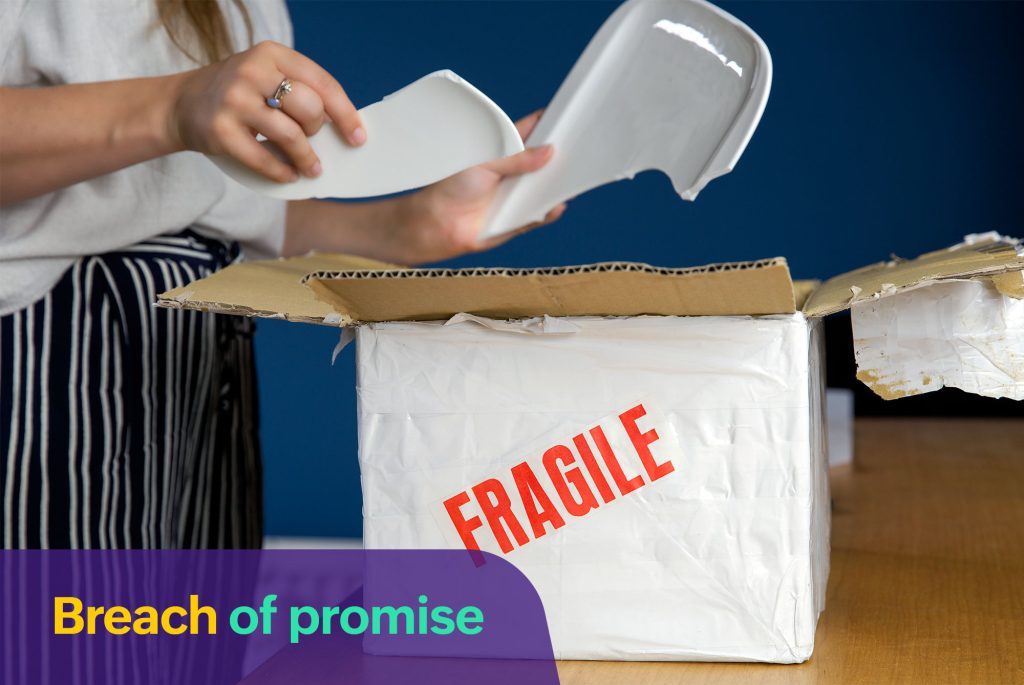
Solution
The majority of these issues depend on what happens right after an order is received and the way you collect the order. Manually collecting orders by phone, WhatsApp, or written note can result in a delay in processing them to the billing stage, and picking incorrect items. Adopting a system-based order collection, or online order taking app can ensure you always know exactly what the customer wants. The next step is to implement a systematic process to pick the orders quickly and accurately with methods like wave-picking and barcode scanning-based validation while picking. Defining the product weight, dimensions, and fragility chances in the catalogue master helps the packaging team know the right materials and size of packaging to be used. Defining standard operating procedures for packaging time, packaging style, and taping materials is crucial if you are doing cross-city deliveries.
2. Lack of communication
Deliveries should be seamless and customers should only worry about the moment they place an order and when they receive and consume or use it. The products we deliver should be memorable, but the process should be unremarkable.
A customer asking “Where’s my order?” and a delivery executive asking “Where’s your home?” are two classic questions in-home deliveries that create anxiety. Keeping the customer unaware of the status of their order and constantly contacting customers with questions about their location are equally troubling activities.
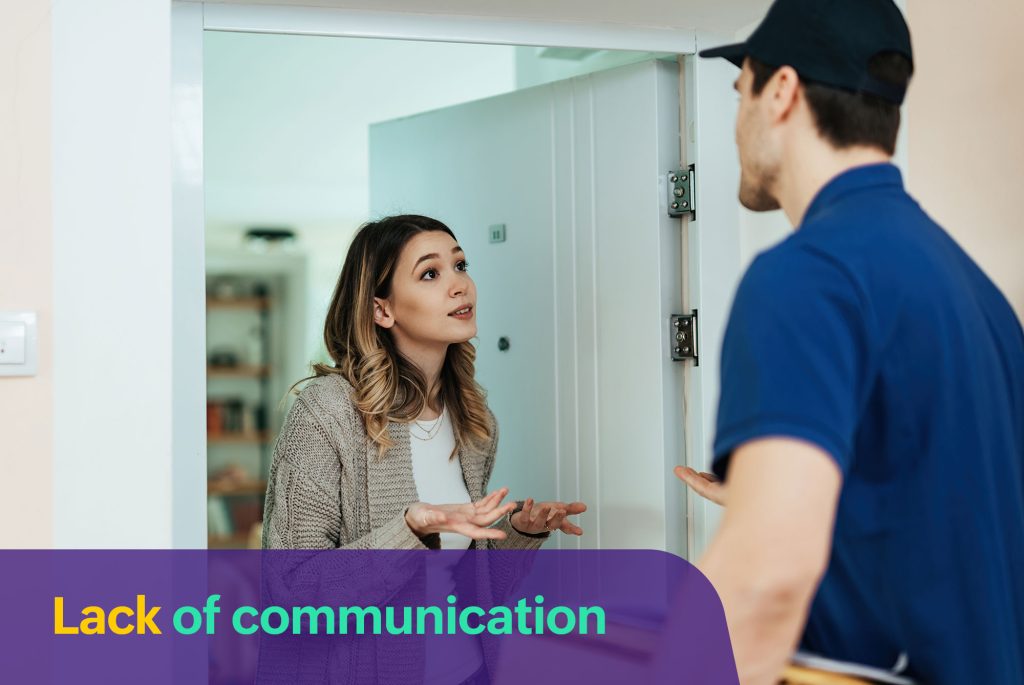
Solution
As communication evolved from waiting for replies to letters and postcards, to now seeing exactly when a message is read, people’s minds are trained to expect to know the live status of something and be able to instantly track it. Providing a live tracking link for deliveries or sharing the status of an order such as packed, ready to delivery, or delivery in progress, with a clear ETA could address this problem.
Secondly, know your customer (KYC) well. KYC shouldn’t be restricted to a customer’s phone number and name. Get your customer’s clear address with the house number, a landmark to help find it, a map location or a pin that captures their exact location at the time they place their order, so your delivery executives can find them without contacting them.
3. Insufficient choices for customers
Customers demand flexibility when placing orders. Everything from what they order to when they receive the order needs to be in accordance with their desires and preferences. Restricting the freedom for customers when choosing their delivery slots, cancelling an order instead of rescheduling it, not offering express delivery, or refusing to accept returns during delivery are major put-offs given the standards set by major logistics players in the market.
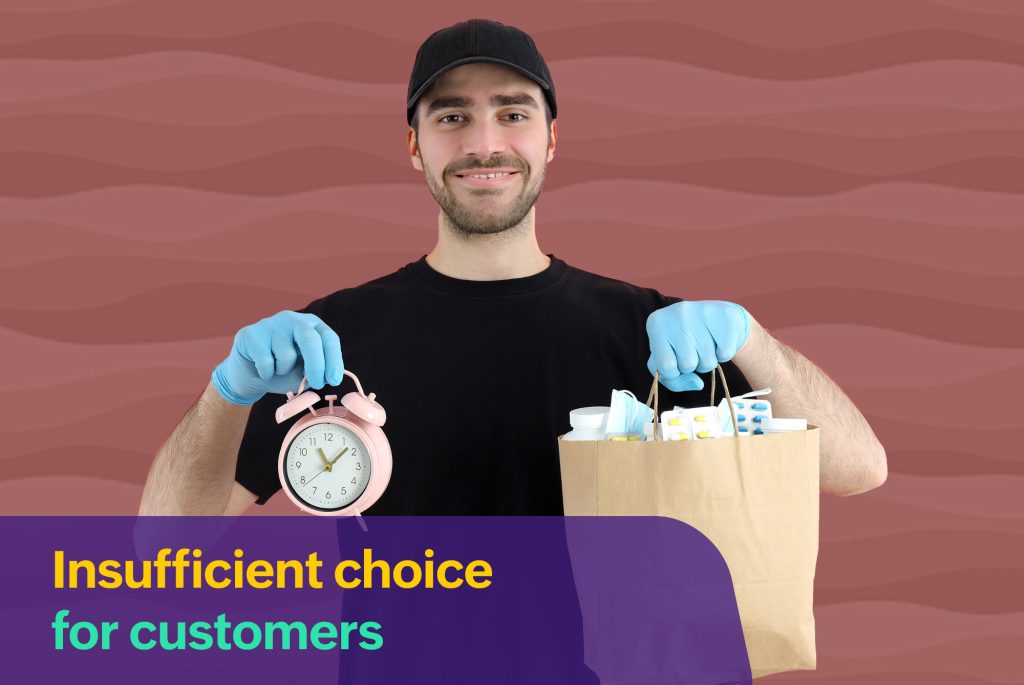
Solution
Offering flexibility might sound like a huge cost regarding reverse logistics and additional resources, but it is affordable if mobile-based delivery management is adopted. This is where your delivery executives can mark deliveries to be rescheduled or return products at the time of delivery.
You can streamline your whole ordering process during the initial setup including options for selecting delivery slots or opting for express delivery. This can be done with manual processes or when using a mobile-based order-taking app. To offset these expenses, you can pass the expense partially to your customer by charging a nominal fee for the convenience of selecting a peak delivery time or requesting express delivery.
4. Too much burden on delivery executives
Being a delivery executive is not a passionate job. Delivery executives are gig workers or someone who is also performing another duty in your shop. Requiring your delivery executive to learn multiple skills and making it the type of position that requires upskilling or ongoing training could result in increased attrition.
Expecting the delivery executive to memorize the routes of regular customers, calculating the ideal route for multiple order deliveries, managing the cash on delivery, and performing multiple delivery book entries in a day, can overburden them and restrict them in delivering delight to customers.
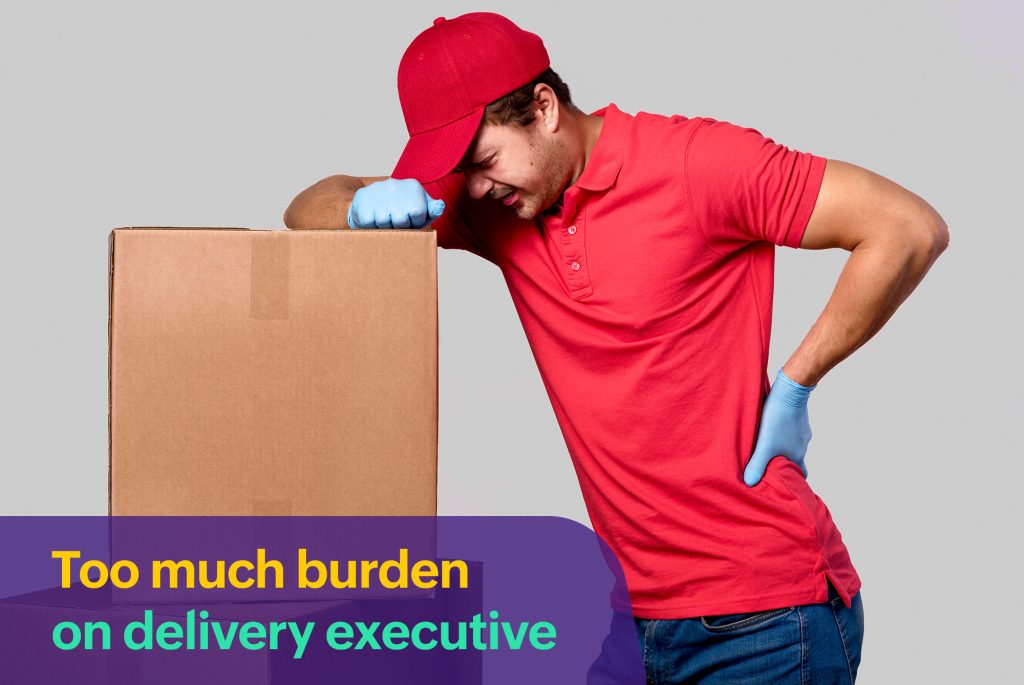
Solution
Be sure to give the right amount of cash for the delivery executives to tender change for cash-on-delivery orders and electronically record them. All cash-on-delivery bills should be closed at the counter automatically without the intervention of delivery executives. Give them the right tools to go to the customer’s location including the ideal route for covering multiple deliveries and notifying them about their next order, without reaching a coordinator in your store.
The easiest way to fix this is by monitoring the time it takes to train a new delivery executive from the moment they join to when they make their first delivery. After evaluating your training, identify areas where specific training can be replaced with the right tools and processes. The rule of thumb is that anyone working in your store should be able to step in as a delivery executive and do the job properly with only 10 minutes of training.
5. Handling post-delivery issues
Home deliveries don’t end on the customer’s doorstep’ what happens after the delivery matters just as much. The actual consumption of products happens after delivery and, often, people realize the gaps in service a day or even more after the delivery.
A classic mistake businesses make is putting an end to the transaction once the delivery is made, forcing the user to accept the gaps in service. Saying no to returns, exchanges, or replacements, or not addressing quality issues would be enough of a reason for your customers to switch to your competition.
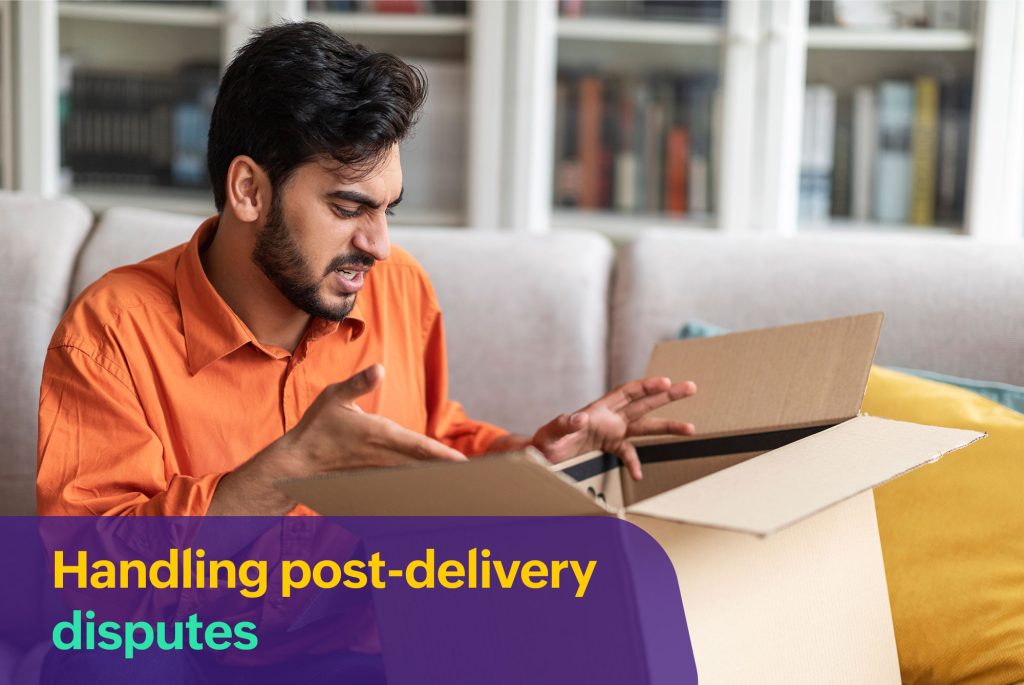
Solution
Schedule a feedback form to be sent out a few hours after the delivery, keeping in mind the time at which people would have actually consumed your product. In order to figure out your delivery problems, ensure there are processes in place to provide proof of delivery depending on what products you deliver. For instance, you can choose to capture a photo of the package after it’s delivered, have the customer agree to an open-box delivery where they are asked to open the parcel in front of the delivery executive or initiate an OTP-based delivery.
In the case of product returns and exchanges, ensure the pending amount or product to be replaced is recorded accurately and is transparent so your customer can track the process.
Bonus tip: Adhering to delivery compliance
Supplying your delivery team with the sales invoice and purchase order (if available) will ensure they can navigate smoothly across regulatory check posts. If you are delivering products valued at more than ₹50,000 in India via roads, it is mandatory to generate an e-way bill.
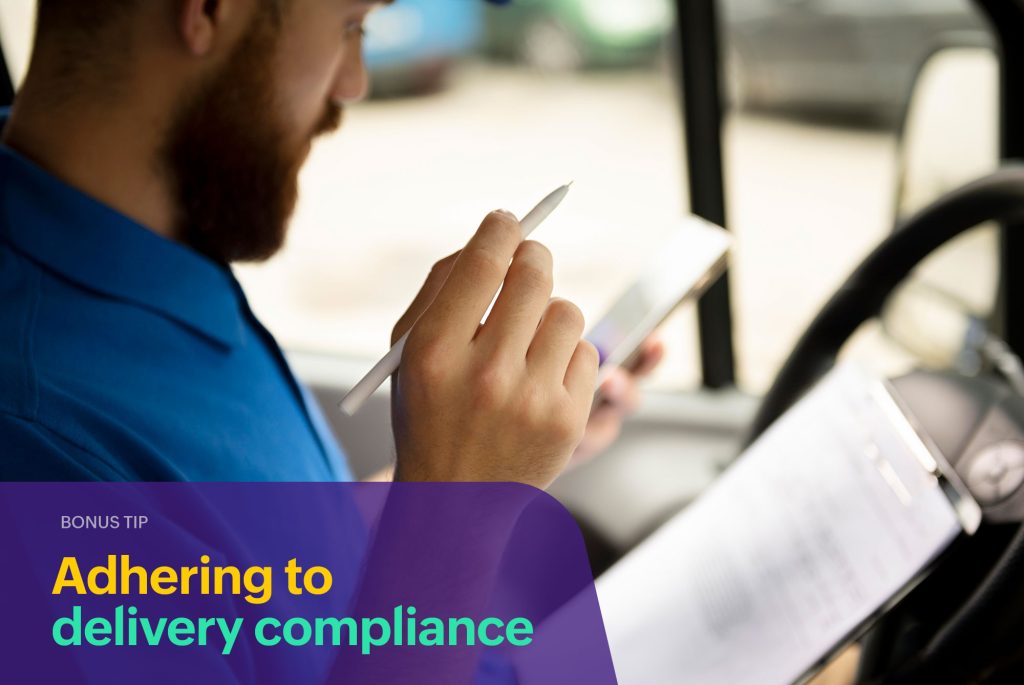
Introducing GoDeliver: A complete solution for your delivery issues
Gofrugal GoDeliver ensures all your door deliveries are fast, accurate, and cost-effective by employing minimal resources and requiring minimal training for your executives to perform their delivery operations.
GoDeliver’s mobile app helps delivery executives:
- Get instant notifications about the delivery allocated.
- Review order details against pick-up, and complete and partial delivery.
- Navigate to a customer’s location faster with map integration.
- Manage delivery preferences like reschedules, sales returns, and cash-on-delivery.
GoDeliver’s web app helps you or your store managers:
- Track the live location of delivery executives.
- Monitor the performance of delivery operations in real-time.
- Allocate delivery for executives automatically or manually.
- Settle delivery commission, and petrol convenience with distance tracking reports.
The popular mistakes and solutions outlined here can help you not just streamline delivery operations, but also prepare for the upcoming buzz on super-fast deliveries, popularly referred to as Q-commerce or Quick commerce. Wunderman Thompson Commerce’s report “The Future Shopper 2022” states that at least one in four customers globally needs their order to be delivered within two hours. If you’d like to venture into Q-commerce, give this blog a read.
